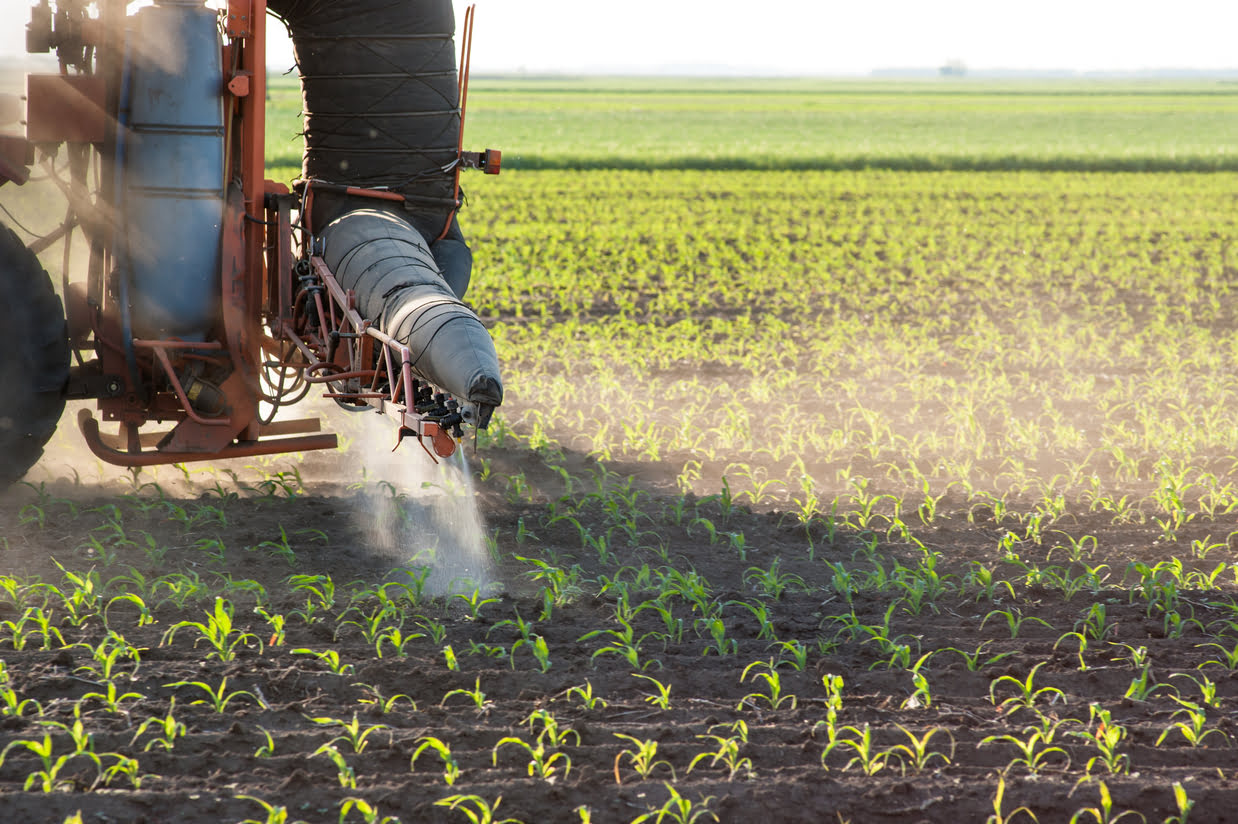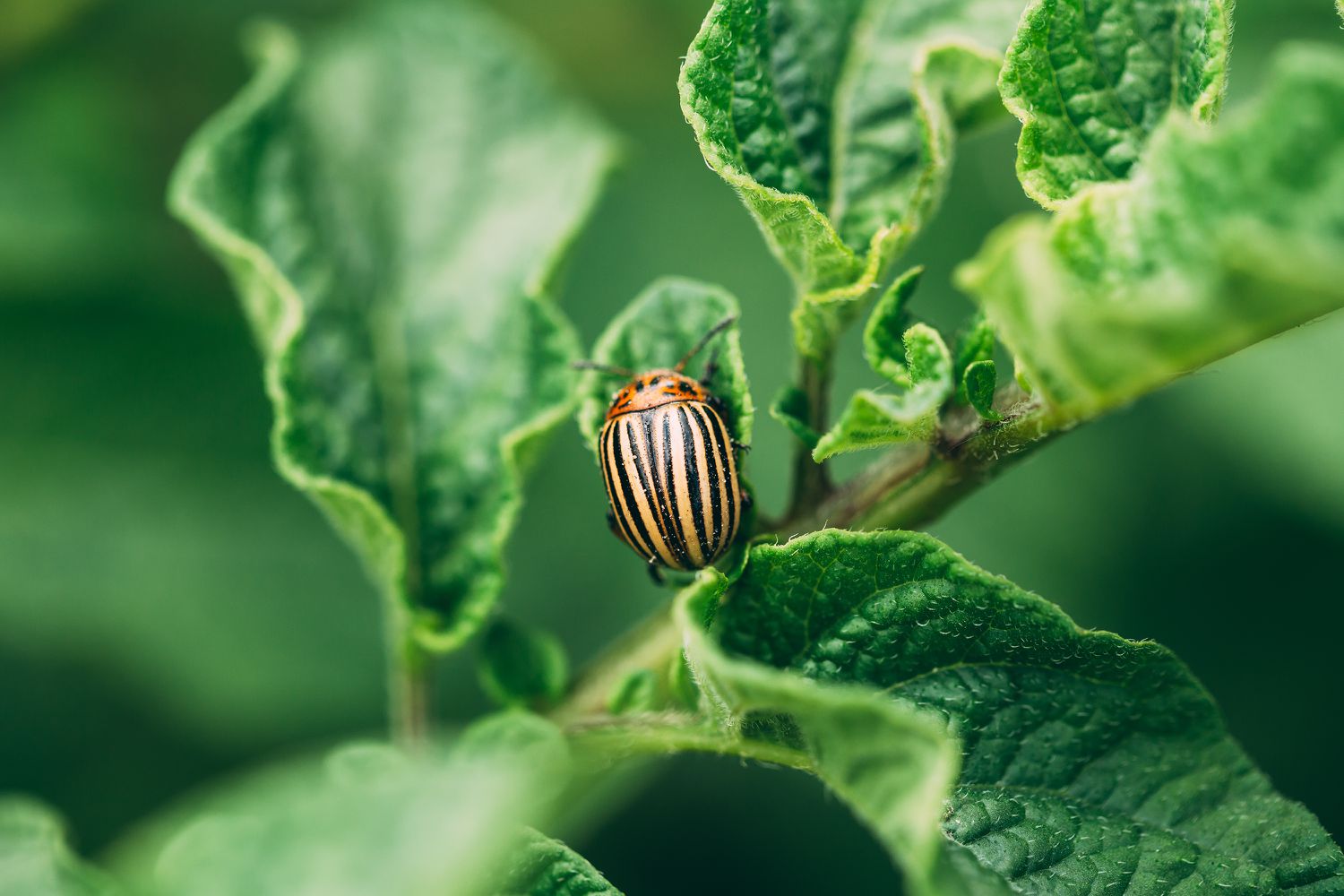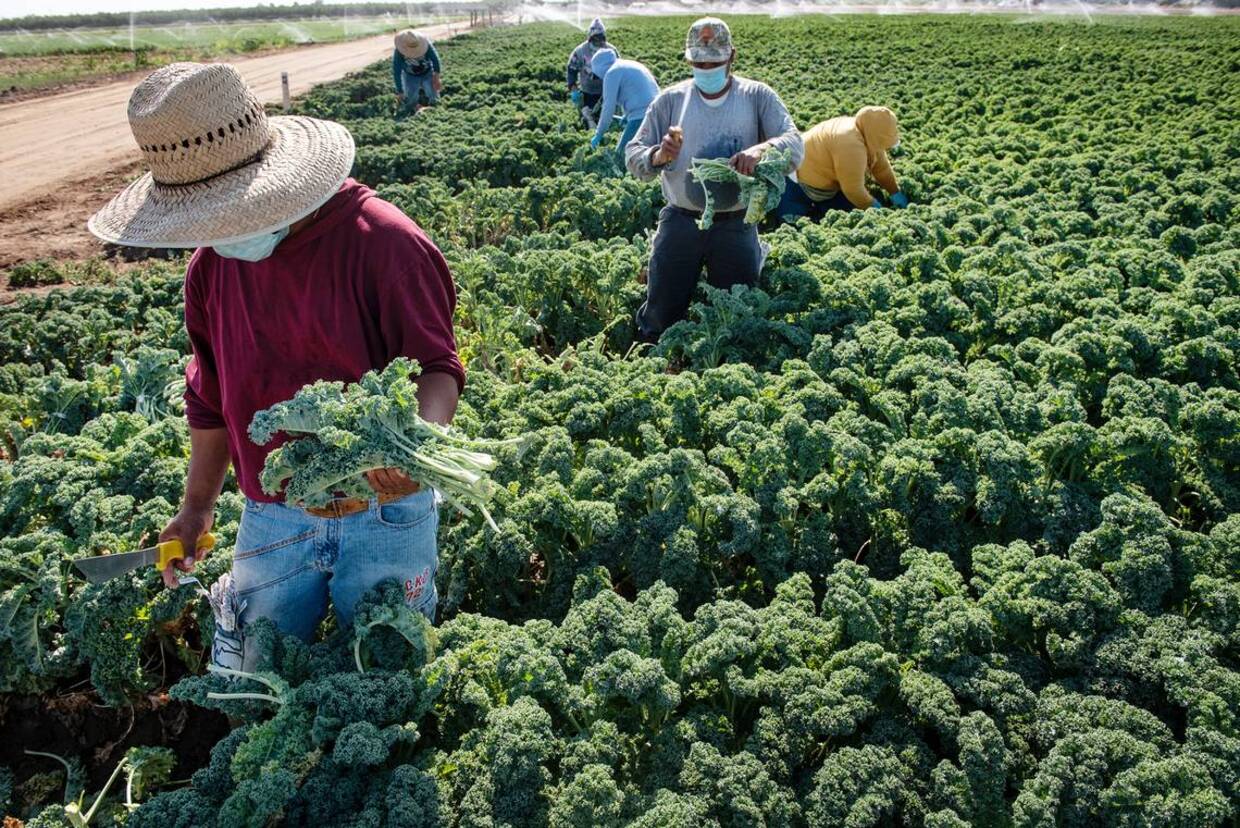Home>Gardening News and Trends>Latest News>What Are Systemic Pesticides


Latest News
What Are Systemic Pesticides
Modified: January 22, 2024
Stay updated with the latest news on systemic pesticides. Find out what they are and how they affect the environment and human health.
(Many of the links in this article redirect to a specific reviewed product. Your purchase of these products through affiliate links helps to generate commission for Chicagolandgardening.com, at no extra cost. Learn more)
Table of Contents
Introduction
Welcome to our comprehensive guide on systemic pesticides. In this article, we will explore the concept of systemic pesticides, how they work, the different types available, their benefits, as well as the environmental concerns and risks associated with their use.
As the demand for pest control in agriculture and horticulture continues to grow, the need for effective and efficient solutions has become paramount. Systemic pesticides are one such solution that has gained significant attention in recent years.
Unlike contact pesticides that remain on the surface of plants, systemic pesticides are absorbed and transported within the plant’s vascular system. This unique characteristic allows them to provide long-lasting protection by targeting both the pests and the plant tissues they feed on.
The use of systemic pesticides has revolutionized pest management practices by offering several advantages over traditional methods. However, there are also concerns regarding their impact on the environment and non-target organisms, which we will discuss in detail.
Throughout this article, we aim to provide you with an in-depth understanding of systemic pesticides, their mechanisms of action, benefits, and potential risks. By the end of this guide, you will have a clearer insight into the role of systemic pesticides in modern agriculture and the alternatives available for sustainable pest control.
Definition of Systemic Pesticides
Systemic pesticides, also known as systemic insecticides or systemic fungicides, are a category of pesticides that are specifically designed to be absorbed and translocated within a plant’s vascular system. Unlike contact pesticides that remain on the surface of the plant, systemic pesticides are distributed throughout the plant tissues, including the leaves, stems, and roots.
This unique characteristic allows systemic pesticides to provide long-lasting protection against pests and diseases. When pests or pathogens come into contact with the plant’s tissues, they ingest or absorb the systemic pesticide along with the plant’s sap, resulting in their control or elimination.
Systemic pesticides come in various formulations, including liquids, granules, and powders, and can be applied through different methods such as foliar spray, soil drench, or seed treatment. They target a wide range of pests and diseases, including insects, mites, nematodes, fungi, and bacteria.
These pesticides contain active ingredients that are specifically formulated to be soluble in water or to have a high affinity for plants. Some of the commonly used active ingredients in systemic pesticides include neonicotinoids, systemic organophosphates, and systemic carbamates.
It’s important to note that systemic pesticides not only protect the parts of the plant that are directly treated but also provide internal protection throughout the entire plant. This means that even new growth, which emerges after the pesticide application, can be safeguarded against pests and diseases.
Due to their systemic nature, these pesticides have the ability to control pests that are hidden or difficult to reach with conventional pesticides, such as insects that bore into plant tissues or pathogens that reside within the plant.
Overall, systemic pesticides offer a targeted and efficient approach to pest and disease management in agriculture, providing a more comprehensive and long-lasting solution than contact pesticides.
How Systemic Pesticides Work
Systemic pesticides work by being absorbed and translocated within a plant’s vascular system, allowing them to provide broad-spectrum protection against pests and diseases. The mode of action of systemic pesticides differs depending on the type of pest or disease being targeted.
When applied to plants, systemic pesticides can enter through various pathways. They can be absorbed through the plant’s leaves and stems, or they can be taken up by the roots and transported to other parts of the plant through the xylem or phloem.
Once inside the plant, systemic pesticides can act in different ways. In the case of insect pests, they can interfere with the insect’s nervous system, disrupting feeding behavior, growth, and reproduction. Some systemic pesticides can also inhibit the production of chitin, a key component of the insect’s exoskeleton, leading to deformities and ultimately death.
For diseases caused by fungi or bacteria, systemic pesticides can inhibit the development and spread of pathogens within the plant. They can disrupt the metabolism or cellular processes of the pathogens, preventing them from reproducing or causing damage to the plant tissues. Some systemic pesticides also induce the plant’s defense mechanisms, enhancing its ability to withstand infection.
One of the major advantages of systemic pesticides is their ability to provide ongoing protection. Since they are distributed throughout the plant, they can continue to control pests and diseases even after the initial application. Systemic pesticides can be present in the plant for an extended period, with new growth and tissues being protected as they emerge.
The effectiveness of systemic pesticides can be influenced by various factors, including the plant species, application method, environmental conditions, and the specific pest or disease being targeted. It’s important to follow the manufacturer’s instructions and ensure proper dosage, timing, and application technique to maximize the efficacy and minimize potential risks.
While systemic pesticides offer many benefits in terms of convenience and long-lasting protection, it’s crucial to use them responsibly and judiciously. By understanding how systemic pesticides work, farmers and gardeners can make informed decisions about their use and integrate them into an overall integrated pest management (IPM) approach for sustainable and environmentally friendly pest control.
Different Types of Systemic Pesticides
Systemic pesticides can be categorized into different types based on their chemical composition, target pests or diseases, and application methods. Here, we will discuss some of the commonly used types of systemic pesticides:
- Neonicotinoids: Neonicotinoids are a class of systemic insecticides that target specific receptors in the nervous system of insects. They are highly effective against a wide range of pests, including aphids, whiteflies, beetles, and caterpillars. Neonicotinoids are widely used in agriculture, but they have also raised concerns due to their potential negative impact on pollinators like bees.
- Systemic fungicides: Systemic fungicides are designed to control fungal diseases in plants by inhibiting the growth and spread of pathogens. They can be applied through various methods such as foliar sprays, soil treatments, or seed treatments. Popular systemic fungicides include azoxystrobin, tebuconazole, and propiconazole.
- Systemic herbicides: Systemic herbicides are used to control unwanted vegetation, including weeds, grasses, and invasive plants. They are absorbed by the plant and translocated to the target tissues, leading to the disruption of key metabolic processes and eventual plant death. Glyphosate, commonly known as Roundup, is a well-known systemic herbicide.
- Systemic nematicides: Systemic nematicides are used to control plant-parasitic nematodes, which are microscopic worms that can cause significant damage to crops. These soil-borne pests can affect the roots, limiting nutrient uptake and reducing plant growth. Systemic nematicides are typically applied to the soil and taken up by plant roots. Examples include abamectin and fosthiazate.
- Systemic bactericides: Systemic bactericides are used to control bacterial diseases in plants. They work by inhibiting the growth and reproduction of bacteria that cause diseases, such as bacterial spot or blight. Copper-based compounds and streptomycin are commonly used systemic bactericides.
It is essential to choose the appropriate type of systemic pesticide based on the target pest or disease and the specific crop or plant being treated. Understanding the different types of systemic pesticides available can help farmers and gardeners select the most effective and suitable option for their pest management needs.
Benefits of Systemic Pesticides
Systemic pesticides offer several advantages that make them a popular choice for pest and disease management in agriculture and horticulture. Let’s explore some of the key benefits:
- Long-lasting protection: One of the significant advantages of systemic pesticides is their ability to provide long-lasting protection. Since they are absorbed and transported within the plant, they can offer ongoing control, even after the initial application. This means that new growth emerging after treatment is also protected against pests and diseases.
- Effective against hidden pests and pathogens: Systemic pesticides can reach and control pests and pathogens that are hidden or difficult to target with traditional contact pesticides. Insects that bore into plant tissues or pathogens that reside within the plant can be effectively controlled by systemic pesticides, ensuring comprehensive protection.
- Reduced application frequency: Due to their long-lasting nature, systemic pesticides require fewer applications compared to contact pesticides. This leads to reduced labor, time, and overall input costs. Farmers and gardeners can benefit from increased efficiency and convenience in their pest management practices.
- Targeted action: Systemic pesticides provide targeted action by focusing on the specific plant tissues where pests or diseases are present. This reduces potential harm to beneficial organisms and minimizes the impact on the environment. It allows for a more precise control method that helps protect pollinators and other non-target organisms.
- Protection during adverse weather: Systemic pesticides can offer protection to plants even during adverse weather conditions, such as rain or wind. Since they are internally distributed within the plant, they are not easily washed away or degraded by environmental factors, ensuring consistent control and maintaining crop health.
- Enhanced plant health: By controlling pests and diseases, systemic pesticides help maintain the overall health of plants. They protect the plant’s vital functions, such as photosynthesis and nutrient uptake, by preventing damage caused by pests or pathogens. As a result, plants can grow and develop more vigorously, leading to higher yields and improved quality.
These benefits make systemic pesticides an attractive choice for farmers and gardeners seeking effective and efficient solutions for pest and disease management. However, it’s important to use systemic pesticides responsibly, following proper dosage and application guidelines, and considering the potential impact on the environment and non-target organisms.
Environmental Concerns and Risks Associated with Systemic Pesticides
While systemic pesticides offer many benefits in terms of pest control, there are also significant environmental concerns and risks associated with their use. It is crucial to understand and address these issues to ensure sustainable and responsible pesticide management. Some of the key concerns include:
- Impact on pollinators: Systemic pesticides, particularly neonicotinoids, have been linked to detrimental effects on important pollinators such as bees and butterflies. These pesticides can be transferred to nectar and pollen, potentially affecting the health and survival of pollinators. The decline of pollinator populations can have severe consequences for ecosystem health and crop production.
- Accumulation in the environment: Systemic pesticides can accumulate in soil, water bodies, and plant tissues over time, leading to potential long-term ecological impacts. Continuous or excessive use of systemic pesticides can result in soil and water contamination, affecting beneficial organisms, aquatic ecosystems, and overall biodiversity.
- Non-target effects: Systemic pesticides can also have unintended consequences on non-target organisms, including beneficial insects, birds, and amphibians. These pesticides may harm natural enemies of pests or disrupt the food chain, leading to imbalances in ecosystems. It is important to consider the potential effects on non-target organisms when using systemic pesticides.
- Development of resistance: Continuous use of systemic pesticides can contribute to the development of pest and disease resistance. Pests or pathogens may adapt and become less susceptible to the pesticide’s mode of action, resulting in decreased efficacy. This highlights the importance of implementing integrated pest management strategies that incorporate multiple control methods to minimize resistance development.
- Human health risks: Although systemic pesticides are primarily designed to target pests and diseases, there can be potential health risks associated with their use. Direct exposure to these pesticides, especially through inhalation or skin contact, can pose risks to farmworkers, applicators, and nearby communities. It is essential to follow safety protocols and proper protective measures when handling and applying systemic pesticides.
Addressing these environmental concerns and risks requires a holistic approach, including sustainable farming practices, reduced pesticide usage, and the adoption of alternative pest management strategies. Integrated pest management (IPM) techniques, such as crop rotation, biological controls, and cultural practices, can help minimize reliance on systemic pesticides and promote ecological balance.
Regulatory bodies, policymakers, and industry stakeholders play a crucial role in monitoring and regulating the use of systemic pesticides. Continued research and innovation are necessary to develop safer and more environmentally friendly alternatives that can effectively control pests and diseases without compromising ecosystem health.
Regulation and Impact on Agriculture
The use of systemic pesticides in agriculture is subject to regulation and oversight by various governmental and international bodies. These regulations aim to ensure the safe and responsible use of pesticides while minimizing potential risks to human health and the environment.
In many countries, systemic pesticides must undergo rigorous testing and evaluation before they can be approved for use. This includes assessing their potential toxicity, environmental fate, and impacts on non-target organisms. Regulatory agencies set maximum residue levels (MRLs) to limit the amount of pesticide residues allowed in crops to protect consumer health.
The impact of systemic pesticides on agriculture can be significant. Farmers often rely on these pesticides to control pests and diseases, safeguarding crop yield and quality. By providing long-lasting and targeted protection, systemic pesticides can help minimize crop losses and increase productivity, contributing to food security.
However, the reliance on systemic pesticides also poses some challenges. Continuous and extensive use of these pesticides can lead to the development of resistance in pests and diseases, reducing their effectiveness over time. This highlights the importance of using integrated pest management (IPM) strategies that incorporate diverse control methods to minimize resistance risks.
The environmental impact of systemic pesticides on agriculture is a growing concern. As mentioned before, these pesticides can accumulate in the environment and have adverse effects on pollinators, beneficial organisms, and ecosystems. To mitigate these impacts, farmers are encouraged to adopt practices that minimize pesticide use, such as crop rotation, cultural controls, and the use of biological controls as a part of an IPM approach.
Regulation and agricultural practices are evolving to address these concerns. The development of safer and more environmentally friendly alternatives to systemic pesticides is a focus of ongoing research and innovation. This includes the use of biopesticides, precision agriculture techniques, and advancements in integrated pest management strategies.
Farmers and agricultural professionals play a vital role in implementing responsible pesticide management practices. This includes following label instructions, prioritizing pesticide stewardship, and continuously updating their knowledge on the latest research and best practices in pest management.
Ultimately, striking a balance between effective pest control and environmental sustainability is critical for the long-term success of agriculture. Through proper regulation, responsible pesticide use, and the adoption of sustainable farming practices, the impact of systemic pesticides on agriculture can be minimized, ensuring a healthier and more sustainable future for our food systems.
Alternatives to Systemic Pesticides
The concerns surrounding systemic pesticides have led to increased interest in exploring alternative approaches to pest and disease management in agriculture. These alternatives aim to reduce reliance on systemic pesticides while promoting sustainable and environmentally friendly practices. Here are some key alternatives to consider:
- Integrated Pest Management (IPM): IPM is an approach that focuses on using a combination of pest control strategies to minimize the use of pesticides. This includes cultural practices like crop rotation, physical barriers, and the use of beneficial insects to control pests. By promoting natural pest control methods and reducing reliance on chemical pesticides, IPM helps maintain ecological balance and reduces the risk of resistance development.
- Biopesticides: Biopesticides are derived from natural sources such as plants, bacteria, or fungi. They can be used to manage pests and diseases effectively. Examples include microbial products like Bacillus thuringiensis (Bt), which targets specific insect pests, and botanical extracts that repel or disrupt the feeding behavior of pests. Biopesticides offer a low-risk, environmentally friendly alternative to systemic pesticides.
- Crop rotation and diversification: Growing different crops in rotation, and diversifying the planting of crops, can help disrupt pest life cycles and reduce pest populations. This reduces the need for pesticide use and promotes soil health. Additionally, intercropping or companion planting can attract beneficial insects that help control pests naturally.
- Cultural practices: Cultural practices, such as proper sanitation, weed management, and using disease-resistant crop varieties, can significantly reduce pest and disease pressure. By creating unfavorable conditions for pests and optimizing plant health, cultural practices can minimize the need for systemic pesticides.
- Precision Agriculture: Precision agriculture techniques, including the use of remote sensing, GPS technology, and data analytics, can help farmers target pest management efforts more accurately. By identifying specific areas of pest or disease infestation, farmers can apply targeted treatments or adopt site-specific management strategies, reducing the overall use of pesticides.
It is important to note that the effectiveness of these alternatives may vary depending on factors such as crop type, pest pressure, and local environmental conditions. Implementing a combination of these strategies tailored to the specific needs of the farm or garden can yield the best results.
Research and development efforts continue to focus on finding innovative and sustainable solutions for pest and disease management. By incorporating these alternatives into agricultural practices, farmers can reduce dependence on systemic pesticides, enhance ecological resilience, and contribute to a more sustainable and resilient food system.
Conclusion
Systemic pesticides have revolutionized pest and disease management in agriculture by providing long-lasting and targeted protection. However, it is essential to consider the potential environmental risks and impacts associated with their use. Understanding the benefits, concerns, and alternatives to systemic pesticides is crucial for promoting sustainable and responsible pest control practices.
While systemic pesticides offer advantages such as extended protection, control of hidden pests, and reduced application frequency, they also raise concerns about their impact on pollinators, non-target organisms, and the development of resistance. Environmental regulations and responsible pesticide management play a vital role in mitigating these risks.
Alternatives to systemic pesticides, such as integrated pest management (IPM), biopesticides, crop rotation, and cultural practices, offer effective and sustainable solutions. These approaches minimize dependence on chemical pesticides and promote ecological balance in agriculture.
Furthermore, precision agriculture techniques and the ongoing research and development of safer alternatives contribute to reducing the reliance on systemic pesticides while improving pest control practices.
Ultimately, striking a balance between effective pest and disease management and environmental sustainability is crucial for the future of agriculture. By adopting responsible pest control practices, integrating alternative methods, and staying informed about the latest research, farmers and gardeners can contribute to a healthier and more sustainable food system.
By understanding the benefits and risks associated with systemic pesticides and embracing alternative approaches, we can pave the way for a more environmentally friendly and sustainable future in agriculture.










